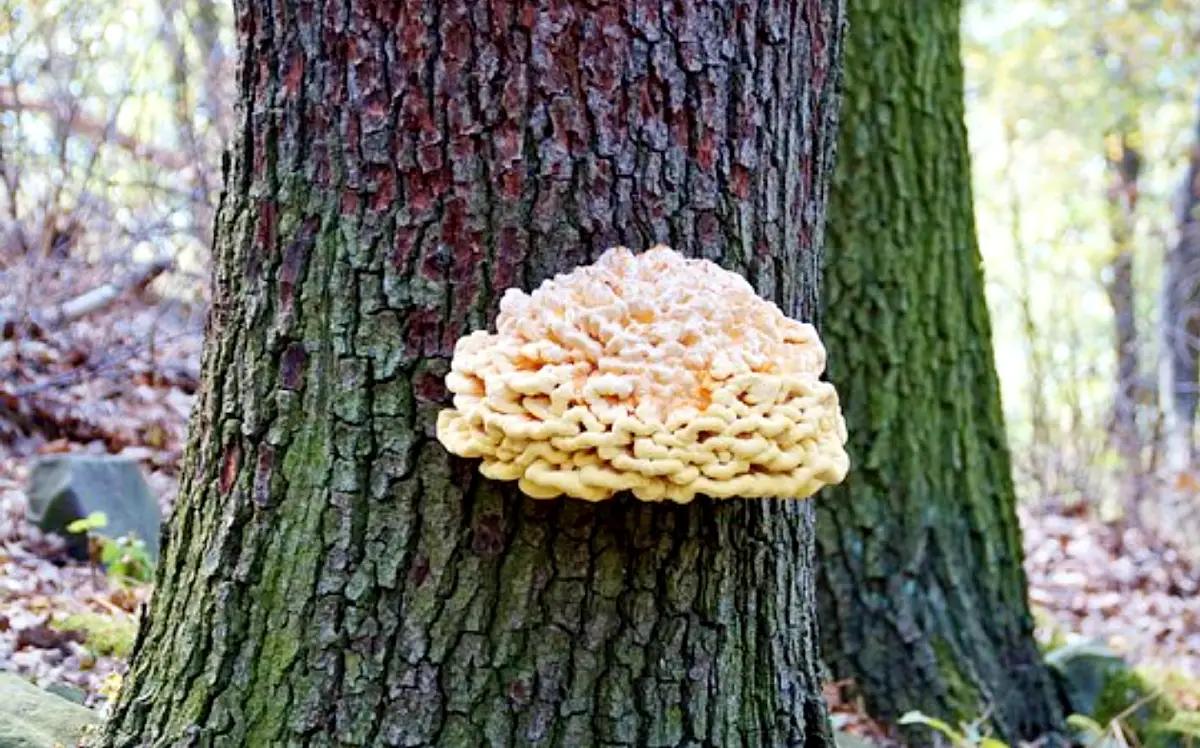Contents
CLASSIFICATION OF POLYPORUS (BRACKET FUNGUS)
Kingdom :- Mycota
Division :- Eumycota
Sub-division :- Basidiomycotina
Class :- Hymenomycetes
Sub-Class :- Holobasidiomycetidae
Order :- Polyporales
Family :- Polyporaceae
Genus :- Polyporus
Polyporus (Bracket fungi) are common on tree trunks or on wood in damp forests.
STUDY OF HOSTS AND DISEASES
- Many species of the genus are destructive parasites and cause disease in forest and other shade trees. Many others grow on lumber and destroy it.
- sulphureus (sulphur mushroom) causes Wood rot of oaks (Quercus sp.; fam. Fagaceae).
- squamosus causes a serious Heart rot in elms (Ulmus sp.; fam. Ulmaceae) and other trees.
- versicolour grows on various woods and is known as Wood rotter.
- betulinus is very common on birch (Betula sp.; fam. Betulaceae).
VEGETATIVE STRUCTURE
- The mycelium is well developed, branched and septate.
- Generally the mycelium grows within and below the bark but in case of severe attacks, it completely invests the central wood cylinder.
STUDY OF BASIDIOCARP, GILLS, BASIDIA AND BASIDIOSPORES
- The mycelium (dikaryotic) forms a more or less flat fruting body, the basidiocarp.
- The basidiocarp is characteristically shelf-like, shortly stalked and arises from the tree trunks.
- It is leathery, corky or woody, whitish or slightly greyish or brownish in colour.
- The upper surface is generally smooth, sometimes rough, often undulating, while the lower surface is porous. In some species the upper surface is distinctly striated.
- The section of basidiocarp shows an outer context, trama, pores and hymenium.
- The context is the outer fibrous part made up of thick walled hyphae.
- The trama is a loose mass of much branched, septate and anastomosing hyphae.
- The pores or tubes extend from below the context to the lower surface.
- The hymenium is made up of a distinct layer of basidia, lining each pore or tube.
- The basidia are club-shaped, somewhat larger than the steile cells of the hymenium and project slightly into the cavity of the pore.
- Each basidium has four short sterigmata at its free end, terminating into a basidiospore each.
- The large number of basidiospores are discharged in the pore.
- Each basidiospore is small, oval and is uninucleate.
- The basidiospore on germination gives rise to the mycelium (monokaryotic).
IDENTIFICATION
- KINGDOM – Mycota
- Chlorophyll absent
- Reserve food glycogen
- Cell wall of fungal cellulose.
- DIVISION – Eumycota
- A definite cell wall present.
- SUB-DIVISION:- Basidiomycotina
- Mycelium septate.
- Characteistic reproductive body, basidium.
- Basidiospores usually four, produced exogenously.
- CLASS :- Hymenomycetes
- Basidiocarps usually well developed,
- Mostly saprobic.
- SUB-CLASS :- Holobasidiomycetidae
- Basidia club-shaped and non septate.
- ORDER – Polyporales
- Texture of basidiocarp not soft and putrescent.
- FAMILY – Polyporaceae
- Basidia line the inner surface of the pore or tube.
- Tubes or pores, generally deep.
- GENUS – Polyporus
- Bracket or shelf-like shape,
- Basidiocarp grow from wood.
- Spores round, somewhat radially elongated.
- Context always white or light coloured.
REFERENCES


Leave a Reply